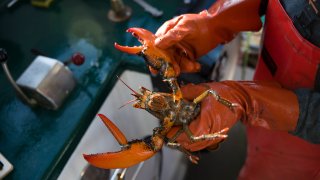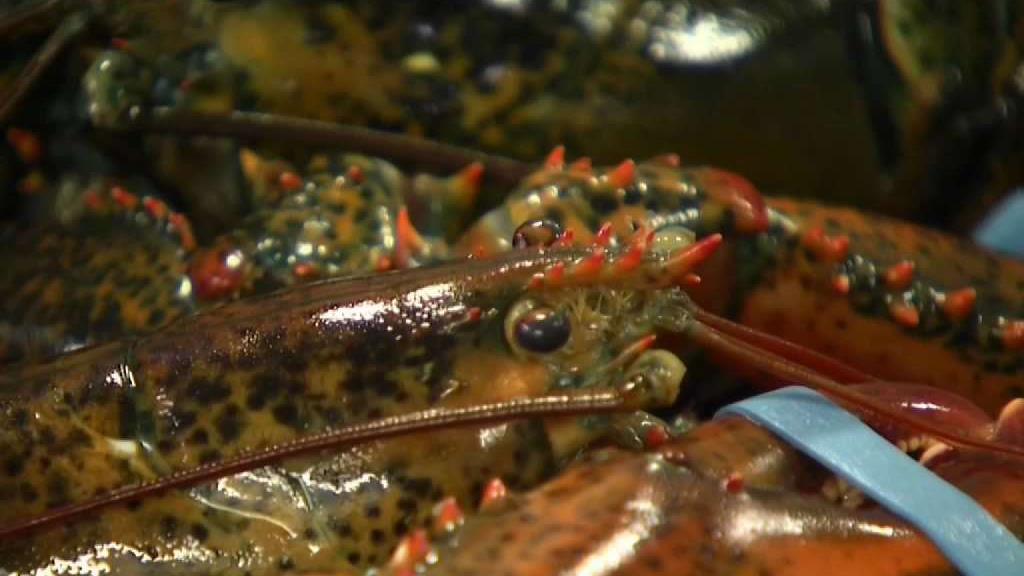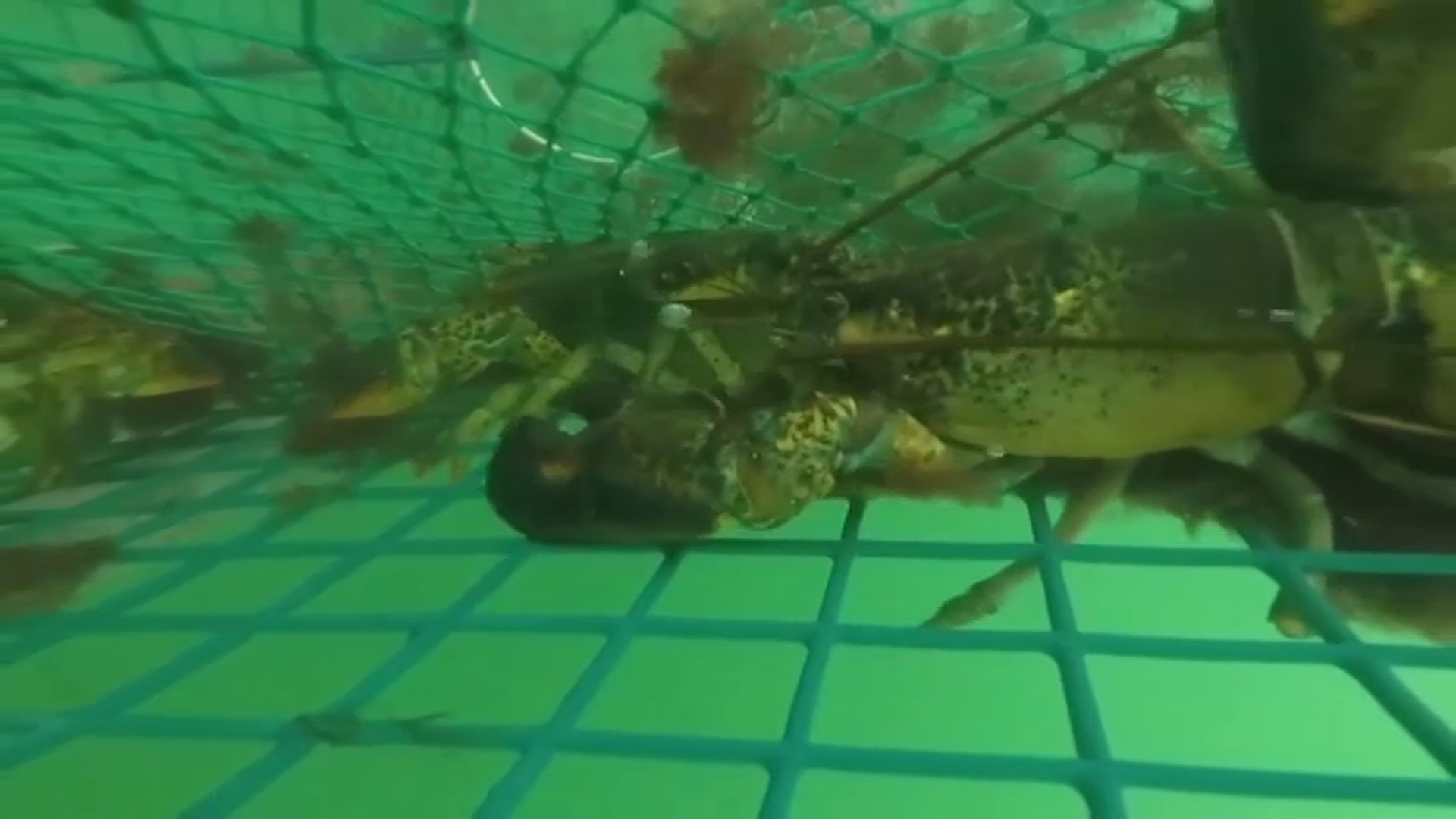
DEER ISLE, MAINE – JULY 03: Lobster fishermen Nathaniel Lane holds a lobster he and his crew caught in their traps set up in the Gulf of Maine on July 03, 2019 in Deer Isle, Maine. Studies indicate that since 1982 the temperatures in the Gulf have warmed about 2.3 degrees Fahrenheit and the warmer water has actually helped increase lobster populations. There is concern though among scientists that further higher in-shore water temperatures could push smaller lobsters farther offshore to deeper, cooler waters, or northward into the cooler Canadian waters which could disrupt the Maine lobster business over time.(Photo by Joe Raedle/Getty Images)
The rules about the minimum and maximum sizes of lobsters that can be trapped off New England could soon become stricter, potentially bringing big changes to one of the most valuable seafood industries in the country.
Fishers are required to measure lobsters from eyes to tail and must throw back the crustaceans if they're too large or too small. The rules, which can vary slightly based on fishing grounds, are intended to maintain a breeding population of the lobsters in key areas such as the Gulf of Maine and Georges Bank.
The regulatory Atlantic States Marine Fisheries Commission is considering changing the standards by a fraction of an inch in some of the fishing grounds. The commission said it's considering the changes because of a worrisome lack of baby lobsters growing off New England.
The changes would arrive at a time when the lobster industry is experiencing record highs in both catch and value, and consumers are paying more for lobsters — already a premium product — than they were just a few years ago. The industry is also challenged by warming oceans and new fishing rules designed to protect rare whales.
Recent surveys that show declining levels of young lobsters are a concern for the future of the fishery, said Caitlin Starks, senior fishery management plan coordinator for the commission.
“Those numbers were declining,” Starks said. “The levels of new lobsters recruiting into the fishery were particularly low, and there was concern that was going to foreshadow decline.”
The commission is soliciting public comment on the proposal and plans to hold public hearings about it in March, Starks said. The changes would affect lobster fishers from Maine to the waters off southern New England, and the hearings will be held in those places, Starks said.
Changes could be implemented by fall 2024 if they are approved, Starks said.
Lobster fishing groups such as the Massachusetts Lobstermen's Association are following the developments, said Beth Casoni, executive director of the group. The association doesn't have a stance yet because the exact specifications of the proposed changes are still to come, she said.
“We're waiting to see what the preferred management options are,” Casoni said.
The size of the U.S. lobster catch has increased dramatically in the last 15 years. The catch in Maine, which is by far the largest producer of lobsters, is typically more than 100 million pounds per year. Fishermen had never even eclipsed 80 million pounds in a single year as recently as 2008.
But the population of lobsters off southern New England has crashed. And scientists who perform surveys of baby lobsters from eastern Canada to Long Island, New York, have found a below average number of them settling on the ocean bottom in areas such as the Gulf of Maine since 2012, the commission said in a statement.
“Given the economic importance of the lobster fishery to many coastal communities in New England, especially in Maine, potential reductions in landings could have vast socioeconomic impacts,” the statement said.
Canadian fishers harvest the same species of lobster and have their own measurement standards, which throws a wrinkle into efforts to manage the population.
The rationale for changing the U.S. measurement standards is that it gives lobsters more opportunity to reproduce, said Richard Wahle, a marine science professor at University of Maine who directs the Lobster Institute at the university. The change would also have ramifications such as marketing consequences for the U.S.-Canada trade, he said.
More restrictive measurement guidelines “would be consistent with the precautionary approach to hedge bets against poor year classes," Wahle said.



